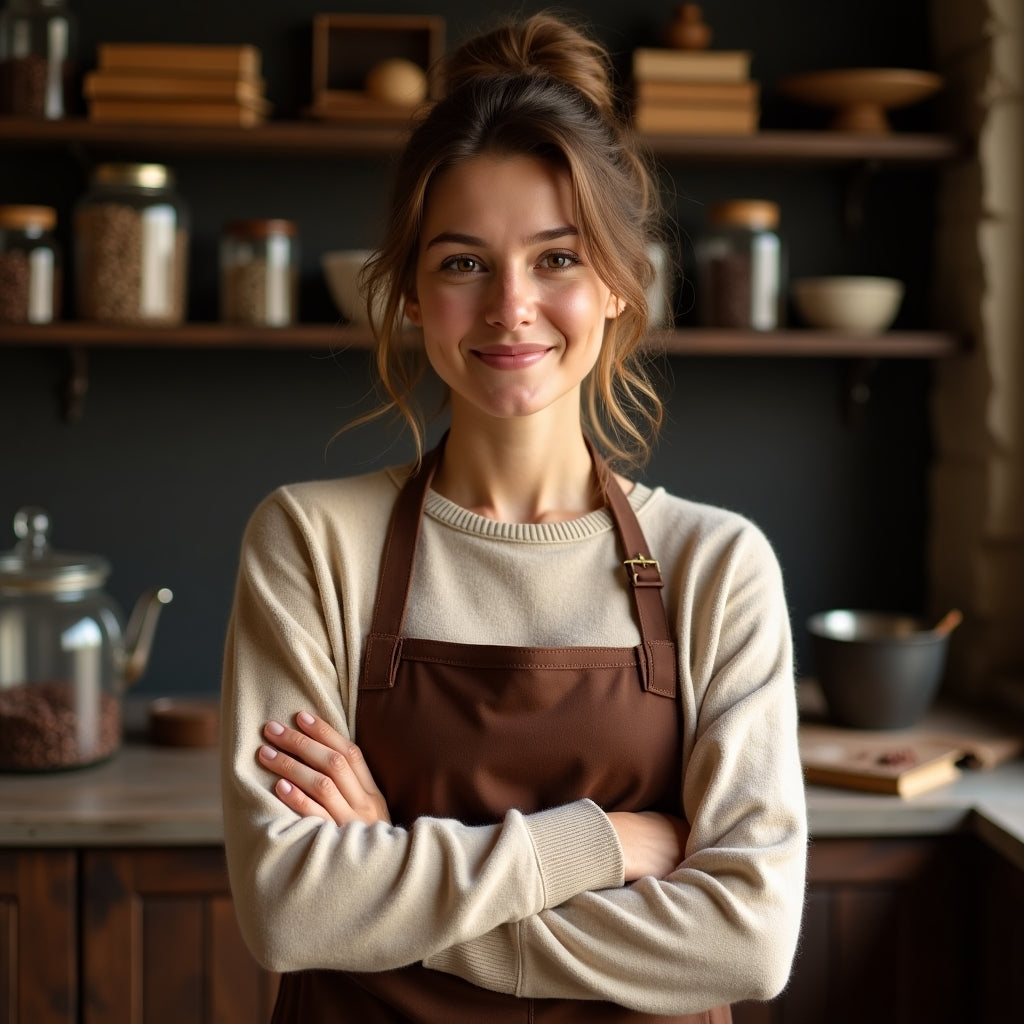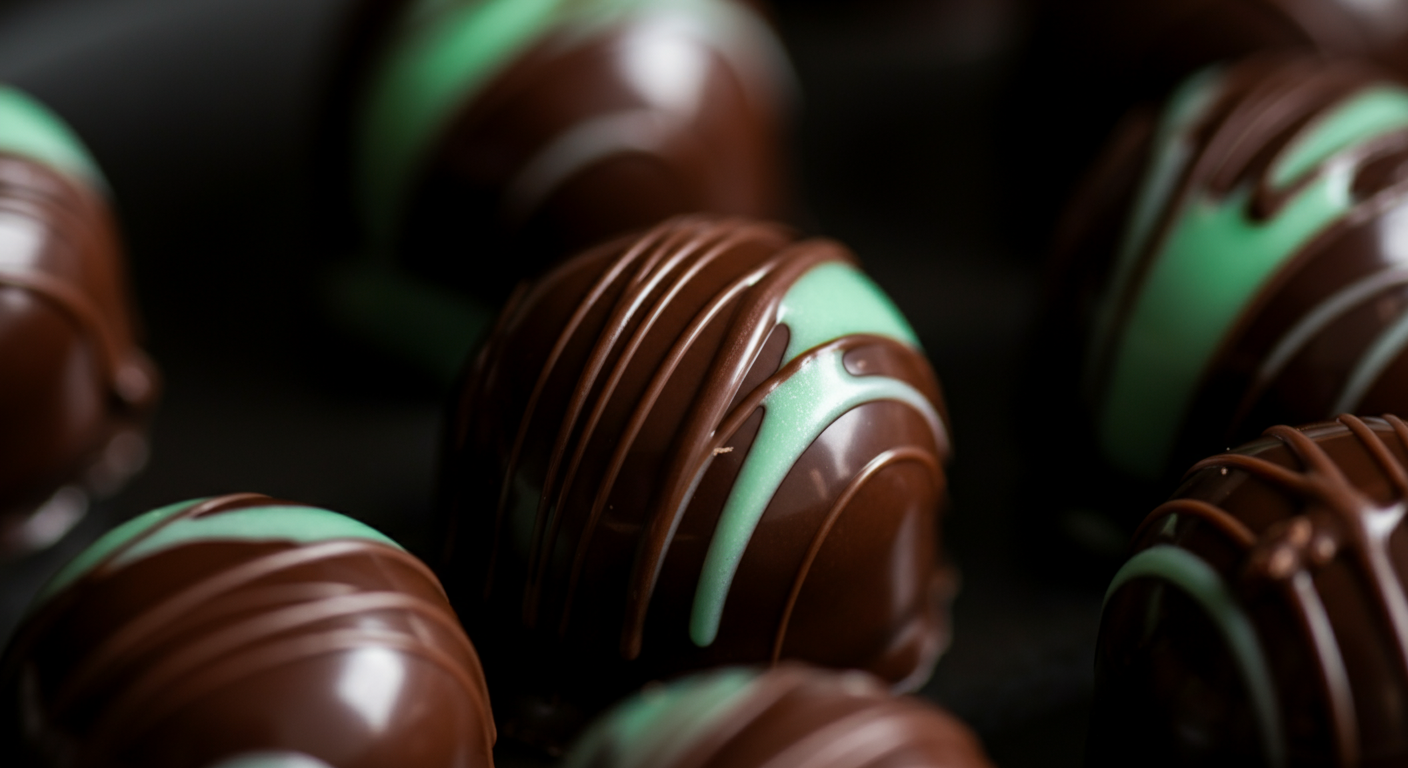
From Bean to Bar: The Magical Journey of How Chocolate Is Made
Few foods inspire as much passion as chocolate. This beloved treat has captivated our taste buds and hearts for centuries, yet many chocolate lovers remain unaware of the fascinating journey from tropical fruit to delectable chocolate bar. At Coracao Confections, we believe that understanding how chocolate is made deepens your appreciation for each blissful bite. Join us as we explore the remarkable transformation of cacao beans into the exquisite chocolate creations we craft with love and care.
The Origin Story: Cacao Trees and Their Precious Fruit
The chocolate journey begins in the tropical regions near the equator, where the Theobroma cacao tree grows. The name itself reveals chocolate's revered status—"Theobroma" literally means "food of the gods" in Greek. These trees thrive in the warm, humid climate of rainforest environments, growing best when sheltered by the canopy of taller trees.

Unlike most fruits we're familiar with, cacao pods grow directly from the trunk and main branches of the tree rather than from smaller offshoots. These colorful pods—which can be yellow, orange, red, or purple depending on the variety—contain the treasure that will eventually become chocolate: cacao beans.
Each pod houses between 20-60 beans surrounded by a sweet, white pulp. A single cacao tree produces only 20-30 pods per year—barely enough to make 2-3 pounds of chocolate! This limited yield is just one reason why high-quality chocolate deserves its special status.
Harvesting: A Labor of Love and Tradition
Harvesting cacao is a delicate process that requires skilled hands and careful attention. At Coracao Confections, we source our cacao from the central Huallaga Valley in the San Martin region of Peru, an area renowned for producing some of the world's finest criollo cacao. Our farming partners at Acopagro, a cooperative of more than 2,000 small organic cacao producers, maintain generations of harvesting wisdom.
The harvesting process begins with farmers identifying perfectly ripe pods, which they carefully cut from the tree using specialized machetes or knives. Since cacao trees bear fruit year-round, harvesting typically happens twice a year during peak seasons. Once collected, the pods are opened by hand to reveal the beans nestled in their pulpy white casing.
This labor-intensive harvesting process is the first step in creating chocolate that honors both the land and the people who tend it. At Coracao, we ensure our cacao farmers receive fair trade wages or better, recognizing that exceptional chocolate begins with respecting those who cultivate this precious crop.
Fermentation: Where Flavor Development Begins
The freshly harvested beans wouldn't taste anything like chocolate if eaten directly from the pod. In fact, they'd be astringent and bitter! The critical process of fermentation is what begins the magical transformation into the chocolate flavor we know and love.
During fermentation, the beans and their surrounding pulp are placed in wooden boxes or covered with banana leaves and left to ferment for 5-8 days. As the pulp breaks down, it creates heat and acidity that trigger crucial chemical changes within the beans. Temperatures can reach as high as 120°F during this natural process.
Fermentation is perhaps the most crucial step in developing chocolate's complex flavor profile. It's during this time that hundreds of chemical compounds form, creating the precursors to chocolate's distinctive taste. The beans change from pale to purple-brown, and their harsh bitterness begins to mellow into more complex flavors.
Drying: Preserving Quality and Preventing Mold
After fermentation, the beans must be dried to reduce their moisture content from approximately 60% to less than 8%. This prevents mold growth and prepares the beans for storage and transport. In most cacao-growing regions, this is done by spreading the beans out in the sun on large wooden platforms, where they're turned regularly to ensure even drying.
The drying process typically takes 5-7 days, depending on the climate and weather conditions. During this time, the beans continue to develop their flavor as some of the acidic compounds evaporate and oxidation occurs. Proper drying is essential—beans dried too quickly can be acidic, while beans dried too slowly may develop mold or off-flavors.
At Coracao Confections, we work with farmers who have mastered the art of proper fermentation and drying, as these initial steps set the foundation for exceptional chocolate quality.
Sorting and Cleaning: Quality Control Begins
Once the beans are dried, they undergo careful sorting and cleaning. This crucial step removes any defective beans, foreign matter, or beans that didn't properly ferment. Sorting can be done by hand or with specialized equipment that separates beans by size, density, and quality.
For artisanal chocolate makers like us at Coracao Confections, quality control at this stage is paramount. We meticulously inspect our cacao beans to ensure only the finest make it into our chocolate. While industrial chocolate manufacturers might be less selective, our commitment to excellence means we carefully examine each batch for quality.
Roasting: Developing Depth of Flavor
Roasting is where the chocolate maker's art truly begins to shine. During this process, the beans are heated to temperatures typically between 210-290°F for varying amounts of time, depending on the desired flavor profile. Roasting serves multiple purposes:
- It further develops the chocolate flavor as complex chemical reactions occur
- It reduces moisture in the beans
- It loosens the shells, making them easier to remove
- It kills any remaining bacteria, ensuring food safety

At Coracao Confections, we take a unique approach to roasting. While many of our products are made with lightly roasted cacao to preserve more of the beans' natural compounds and fruity notes, we don't claim to be "raw" chocolate. As we explain in our FAQs, truly raw chocolate is a bit of a misnomer since the fermentation process naturally generates temperatures above what would be considered "raw" (usually 118°F). Instead, we focus on light roasting that enhances flavor while preserving the beneficial properties of the cacao.
Cracking and Winnowing: Revealing the Precious Nibs
After roasting, the beans undergo a process called winnowing, which separates the outer husks from the inner meat of the bean—the cacao nibs. This is typically done by cracking the beans into smaller pieces and using air to blow away the lighter shells while the heavier nibs fall into a collection container.
The nibs are the pure essence of chocolate—comprised of approximately 50% cacao butter and 50% cacao solids. These small, crunchy pieces are edible on their own and have a intense, somewhat bitter chocolate flavor. Many chocolate makers, including us at Coracao, also sell cacao nibs as a nutritious snack or cooking ingredient.
Grinding: Creating Chocolate Liquor
The cleaned nibs are then ground into a thick paste called chocolate liquor (despite the name, it contains no alcohol). Traditionally, this was done using stone grinders called molinos, and some artisanal chocolate makers still use this method. Modern production might use steel ball mills, hammer mills, or disc grinders to accomplish the same task.
The grinding process generates heat through friction, which melts the cacao butter contained in the nibs. The result is a smooth, flowing dark liquid with a complex aroma. This chocolate liquor is the foundation of all chocolate products.
At Coracao Confections, we take pride in our artisanal grinding process that preserves the integrity of our premium cacao while creating the perfect consistency for our chocolate.
Refining and Conching: Creating Silky Smoothness
The chocolate liquor alone is too coarse for most palates. Refining reduces the particle size of the solids in the chocolate, while conching is a mixing and aerating process that further develops flavor and creates a smoother texture.
During conching, the chocolate is constantly mixed, sometimes for days, while carefully controlled heat evaporates unwanted volatile compounds and disperses desirable flavor compounds. The friction during this process also further reduces particle size, contributing to a silky mouthfeel.
For dark chocolate, ingredients like sugar, additional cacao butter, and vanilla might be added during this phase. For milk chocolate, milk powder or other milk products are included. At Coracao Confections, we use organic coconut sugar instead of refined sugar, providing a more nutritious sweetener with a lower glycemic index.
Tempering: Creating the Perfect Crystal Structure
One of the most technical aspects of chocolate making is tempering—a process that ensures the cacao butter crystallizes in a stable form. Proper tempering gives chocolate its signature snap, glossy appearance, and melt-in-your-mouth texture, while preventing bloom (the white, chalky appearance that can form on improperly tempered chocolate).
Tempering involves carefully heating chocolate to specific temperatures, then cooling and reheating it in a controlled manner. This process encourages the formation of stable Type V cacao butter crystals while preventing the formation of less desirable crystal forms.
At Coracao Confections, we've mastered the art of tempering to create chocolate with the perfect texture and a beautiful glossy finish. Our chocolatiers monitor each batch carefully to ensure consistent, exceptional quality.
Molding and Setting: Creating the Final Product
The tempered chocolate is then poured into molds of various shapes. For filled chocolates like our Mint Chocolate Truffles, this process involves creating shells, adding fillings, and sealing them with more chocolate.

Once molded, the chocolate is cooled in a controlled environment to set properly. When the chocolate has fully crystallized, it's removed from the molds, inspected for quality, and prepared for packaging.
The Coracao Difference: Our Artisanal Approach
At Coracao Confections, our chocolate-making process combines traditional artisanal methods with innovative approaches that prioritize both flavor and nutrition. Founded by chocolate enthusiasts Daniel Korson and Matthew Rogers, our company has been crafting exceptional vegan chocolate since 2008.
What sets our process apart from conventional chocolate making?
Ethical Sourcing
We source our cacao from Acopagro, a cooperative of more than 2,000 small organic cacao producers in the Huallaga Valley of Peru. This region is known for producing some of the world's finest criollo cacao, with distinctive fruity and floral notes.
Our partnerships support regenerative farming practices that replenish the land rather than depleting it. Acopagro manages the conservation of 108,000 acres of forest in the Huallaga region, demonstrating their commitment to environmental stewardship. All our farming partners receive fair trade wages or better, ensuring that our chocolate supports sustainable livelihoods.
Pure, Plant-Based Ingredients
Our commitment to purity means we use only the finest organic ingredients in our chocolate. Our products are:
- 100% Plant-Based and Vegan
- Certified Organic
- Gluten-Free
- Soy-Free
- Free from refined sugars
- Free from artificial flavors or preservatives
Instead of refined sugar, we use organic coconut sugar, which has a lower glycemic index and retains more of its natural nutrients. For our fillings, we craft delicious ganaches and caramels using ingredients like stone-ground almond butter, cashew butter, and fresh fruit.
Mindful Processing
While we value the nutritional benefits of minimally processed cacao, we prioritize both flavor and food safety. Our cacao is lightly roasted to enhance its flavor profile while preserving beneficial compounds. This approach creates chocolate that is not only delicious but also retains more of cacao's natural benefits.
Our small-batch production ensures careful attention to each step of the process, from roasting to tempering. This artisanal approach allows us to maintain exceptional quality control and craft chocolate with distinctive character.
Experience the Magic: From Bean to Your Blissful Bite
The journey from bean to bar is a remarkable testament to the transformation of a simple tropical seed into one of the world's most beloved foods. At Coracao Confections, we honor this journey through our commitment to quality, sustainability, and pure ingredients.
When you enjoy a piece of Coracao chocolate, you're experiencing the culmination of a process that spans continents, honors tradition, and embraces innovation. From the farmers who carefully tend and harvest the cacao to our skilled chocolatiers who craft each batch with precision and care, every step contributes to the exceptional chocolate that bears our name.
We invite you to savor our chocolate slowly, allowing the complex flavors to unfold on your palate. Notice the bright fruity notes, the rich depth, and the satisfying texture—all hallmarks of chocolate made with reverence for both the product and the planet.
Whether you're indulging in our Dark Chocolate Truffles, experimenting with our Cacao Paste in your own kitchen, or sharing our chocolate bars with loved ones, you're participating in the continuation of a tradition that has brought joy to people for centuries.
From bean to bar, from our hearts to yours—this is the Coracao difference.

Claire Bennett
I'm Claire, a chocolate lover and artisan based in a small town where I run a tiny home kitchen dedicated to exploring everything chocolate. From single-origin dark bars to creamy ganache and handmade truffles, I find joy in working with all types of chocolate. I believe chocolate has a story, and I love bringing that story to life through humble, heartfelt creations.



Leave a comment
This site is protected by hCaptcha and the hCaptcha Privacy Policy and Terms of Service apply.